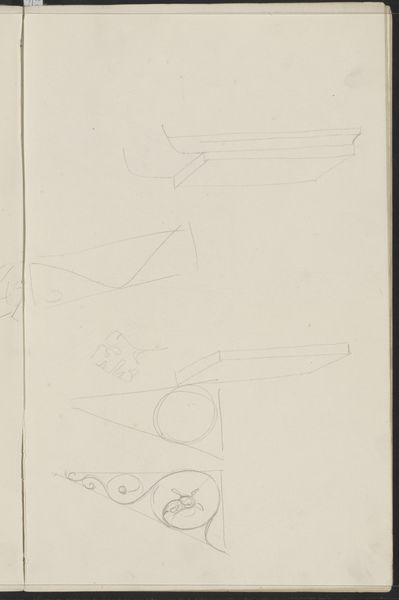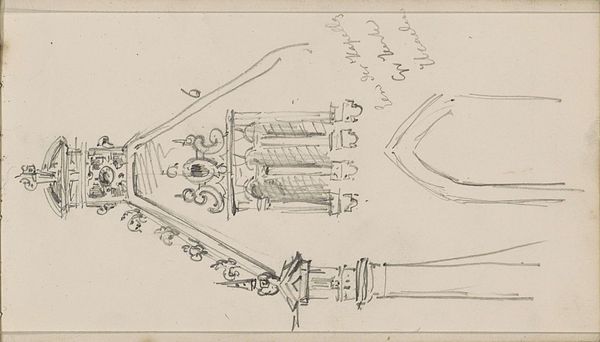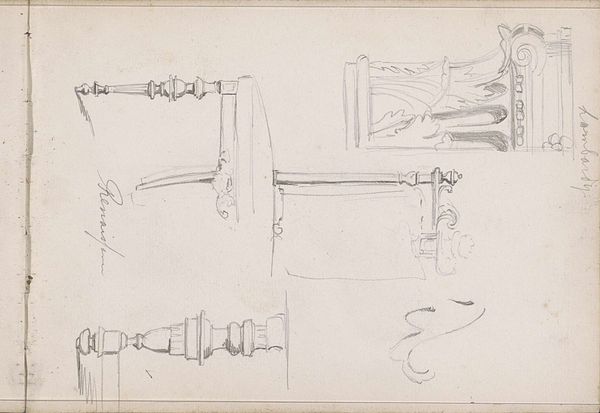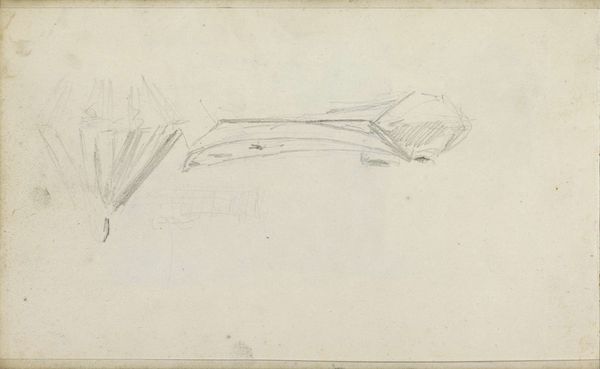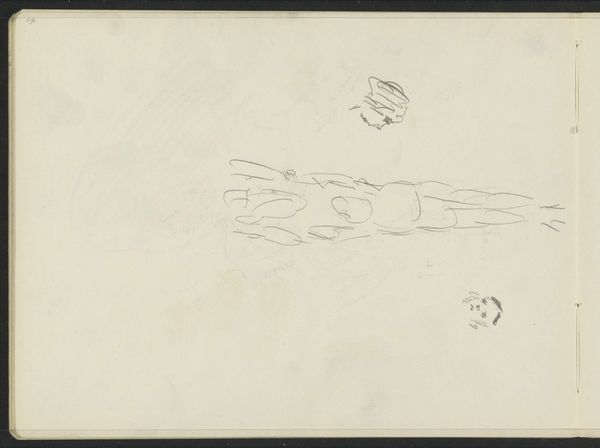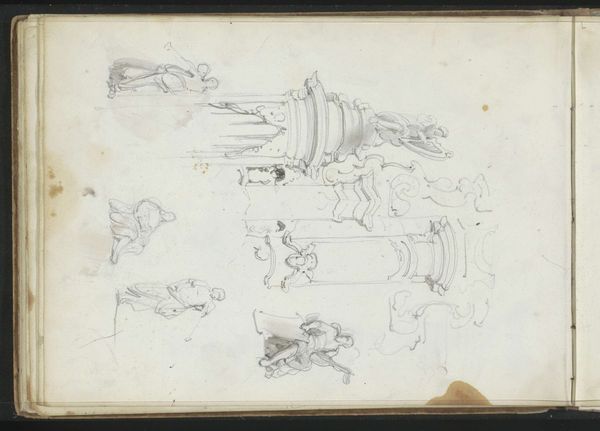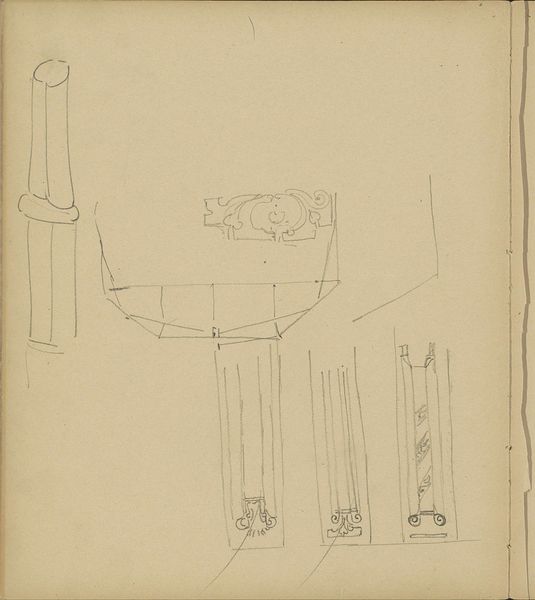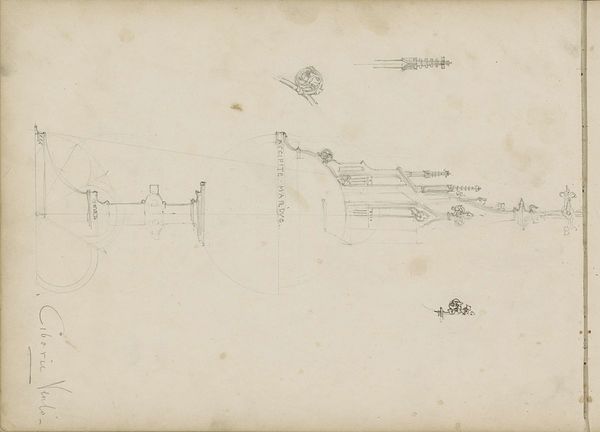
drawing, pencil
#
drawing
#
art-nouveau
#
quirky sketch
#
sketch book
#
personal sketchbook
#
idea generation sketch
#
sketchwork
#
ink drawing experimentation
#
geometric
#
sketch
#
pen-ink sketch
#
pencil
#
sketchbook drawing
#
storyboard and sketchbook work
#
sketchbook art
Copyright: Rijks Museum: Open Domain
Curator: Up next, we have "Studies," a sketchbook page dating from around 1897-1898 by Carel Adolph Lion Cachet, now residing here at the Rijksmuseum. The work features pencil and ink sketches of what appear to be architectural details or perhaps elements of design. Editor: There's a definite feeling of tentative exploration here. I see lines mapping out form, like an architect dreaming up a new kind of structure. A sense of things emerging into being, like an architect exploring forms to then create objects of art nouveau furniture and building ornaments, maybe. Curator: Cachet was deeply immersed in the Art Nouveau movement. And if we consider how architectural motifs served as visual shorthand for societal progress and aspiration, we can decode something. The use of geometric frameworks alongside organic forms is something recurrent for Art Nouveau, blending industrial optimism with nature’s dynamism. Editor: That interplay you mention feels particularly strong here. Look at how the strict geometry interacts with the free-flowing curves of the design. It’s as if the artist is trying to reconcile the precision of the machine age with the unruly beauty of the natural world. But from a purely art historical perspective, seeing sketchbook work allows us to go into an intimate zone of creation. Curator: Precisely! The sketch provides raw insight, stripped of artifice. I see the symbolism embedded in those dualities – nature versus artifice, progress versus tradition – and I interpret this as a search for harmony, reflecting the deeper cultural anxieties and aspirations of the late 19th century. It reflects this search by balancing the geometric versus natural, and the old with the modern world, which will probably be the reason that influenced this being kept at the Rijksmuseum, an influence for current artists in understanding culture through symbol. Editor: Perhaps he’s contemplating the nature of "newness" itself. His attempt to reconcile classical form with Art Nouveau fluidity tells me that modernity doesn’t simply negate the past; instead, it requires a re-interpretation. Curator: An eloquent summary. To be present here in this room to feel its symbolic tension reminds one how this seemingly quiet, understated sketch reflects significant moments and enduring ideals of its time. Editor: And in so doing, encourages a similar re-interpretation in our own. A truly timeless dialogue between an artist and history, preserved on a single page.
Comments
No comments
Be the first to comment and join the conversation on the ultimate creative platform.



